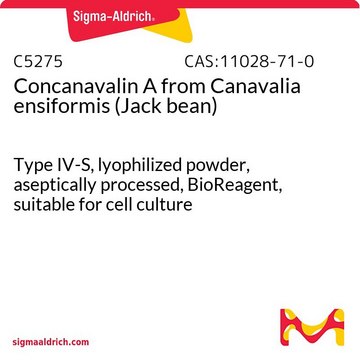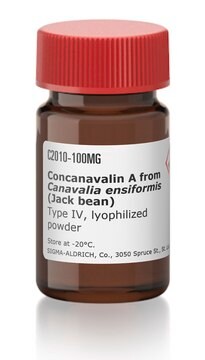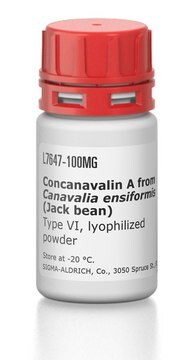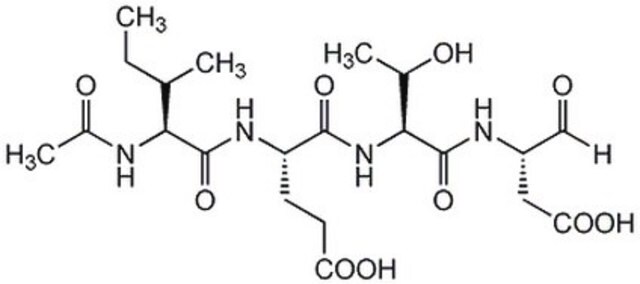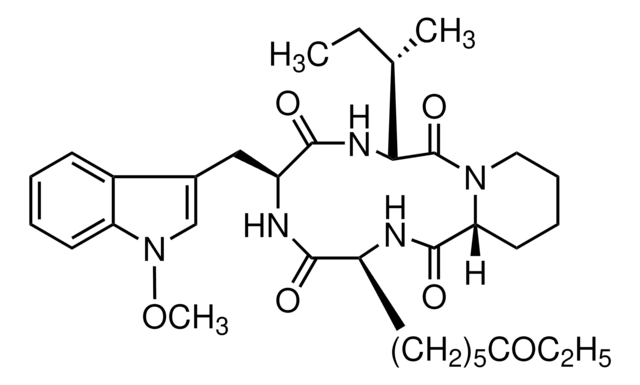Wichtige Dokumente
C0412
Concanavalin A aus Canavalia ensiformis (Jack bean)
Type IV-S, lyophilized powder, γ-irradiated, BioReagent, suitable for cell culture
Synonym(e):
Con A
About This Item
Empfohlene Produkte
Qualitätsniveau
Sterilität
γ-irradiated
Typ
Type IV-S
Produktlinie
BioReagent
Form
lyophilized powder
Methode(n)
cell culture | mammalian: suitable
Verunreinigungen
salt, essentially free
Löslichkeit
PBS: 5 mg/mL, slightly hazy
H2O: soluble, slightly hazy
Lagertemp.
−20°C
Suchen Sie nach ähnlichen Produkten? Aufrufen Leitfaden zum Produktvergleich
Anwendung
- to induce spleen blastogenesis
- to generate ConA blast targets from B6 and lpr spleen cells
- to stimulate splenic lymphocytes from estrogen-and placebo-treated mice
Biochem./physiol. Wirkung
Hinweis zur Analyse
Signalwort
Danger
H-Sätze
Gefahreneinstufungen
Repr. 2 - Resp. Sens. 1 - Skin Sens. 1
Lagerklassenschlüssel
11 - Combustible Solids
WGK
WGK 3
Flammpunkt (°F)
Not applicable
Flammpunkt (°C)
Not applicable
Persönliche Schutzausrüstung
dust mask type N95 (US), Eyeshields, Faceshields, Gloves
Analysenzertifikate (COA)
Suchen Sie nach Analysenzertifikate (COA), indem Sie die Lot-/Chargennummer des Produkts eingeben. Lot- und Chargennummern sind auf dem Produktetikett hinter den Wörtern ‘Lot’ oder ‘Batch’ (Lot oder Charge) zu finden.
Besitzen Sie dieses Produkt bereits?
In der Dokumentenbibliothek finden Sie die Dokumentation zu den Produkten, die Sie kürzlich erworben haben.
Kunden haben sich ebenfalls angesehen
Unser Team von Wissenschaftlern verfügt über Erfahrung in allen Forschungsbereichen einschließlich Life Science, Materialwissenschaften, chemischer Synthese, Chromatographie, Analytik und vielen mehr..
Setzen Sie sich mit dem technischen Dienst in Verbindung.